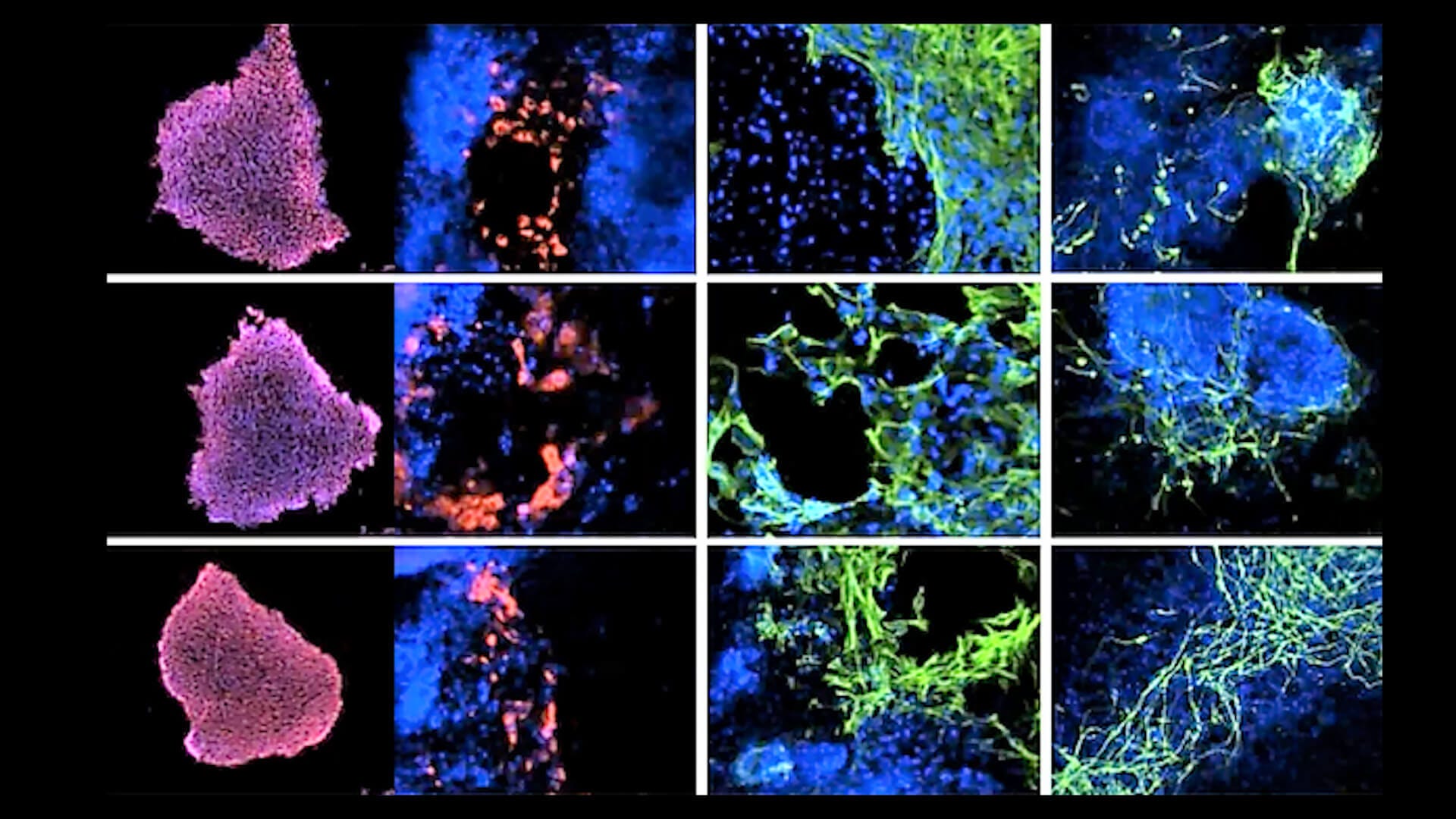Neurological Disease Modeling
Due to the difficulty in obtaining human brain tissue for experimental studies, animal models have traditionally been popular tools for neurological disease modeling and therapeutic evaluation. In recent years, however, researchers have begun using induced pluripotent stem cells (iPSCs) to generate more representative models for studying human neurological disease. These iPSC-based models, including iPSC-derived neurons, glia, neural organoids, and co-cultures, hold tremendous potential for drug discovery applications and studying human neurological disease. Researchers can now generate patient-specific differentiated cell types, bridging the translational gap between studies using animal models and clinical research.
WeтАЩve created these resources to help you with your research in neurological disease modeling and drug discovery, and to give you a taste of what others are doing in the field.
Modeling Genetic Epilepsies with Induced Pluripotent Stem Cells
In this webinar, Dr. Andrew Tidball discusses current and potential uses of iPS cells for modeling epilepsies, how to develop different iPS cell-based model systems, as well as the key advantages and drawbacks of using these model systems.
View Now >-
 iPSCs As Models, Part 2: Modeling the Human Brain with OrganoidsGet a walkthrough of how to generate and characterize iPSC-derived brain organoids from Dr. Anjana Nityanandam, Director of the Human Stem Cell Lab core facility at St. Jude ChildrenтАЩs Research Hospital. Learn how to improve reliability and reproducibility of data from brain organoid models, and get an overview of disease modeling case studies using various 3D cultures.
iPSCs As Models, Part 2: Modeling the Human Brain with OrganoidsGet a walkthrough of how to generate and characterize iPSC-derived brain organoids from Dr. Anjana Nityanandam, Director of the Human Stem Cell Lab core facility at St. Jude ChildrenтАЩs Research Hospital. Learn how to improve reliability and reproducibility of data from brain organoid models, and get an overview of disease modeling case studies using various 3D cultures. -
 iPSCs As Models, Part 1: What Are Induced Pluripotent Stem Cells and How Do You Use Them?Hear from Dr. Anjana Nityanandam, Director of the Human Stem Cell Lab core facility at St. Jude ChildrenтАЩs Research Hospital, as she provides some introductory examples of how iPSCs are used for disease modeling and walks through how to generate and characterize iPSCs. Learn about quality control measures to improve reliability and reproducibility of data, and how to address interline variability in your experiments.
iPSCs As Models, Part 1: What Are Induced Pluripotent Stem Cells and How Do You Use Them?Hear from Dr. Anjana Nityanandam, Director of the Human Stem Cell Lab core facility at St. Jude ChildrenтАЩs Research Hospital, as she provides some introductory examples of how iPSCs are used for disease modeling and walks through how to generate and characterize iPSCs. Learn about quality control measures to improve reliability and reproducibility of data, and how to address interline variability in your experiments. -
 Single-Cell Characterization of Dorsal and Ventral Forebrain Organoid ModelsSTEMdiffтДв Dorsal and Ventral Forebrain Organoid Differentiation Kits can be used to generate models of the developing human forebrain. In this Innovation Showcase from ISSCR 2021, Leon Chew presents data on the cell type composition and activity of the resulting organoids, including gene expression using single-cell sequencing and microelectrode array recording.
Single-Cell Characterization of Dorsal and Ventral Forebrain Organoid ModelsSTEMdiffтДв Dorsal and Ventral Forebrain Organoid Differentiation Kits can be used to generate models of the developing human forebrain. In this Innovation Showcase from ISSCR 2021, Leon Chew presents data on the cell type composition and activity of the resulting organoids, including gene expression using single-cell sequencing and microelectrode array recording. -
 Modeling Alzheimer's risk using human TREM2-knockout microgliaAmanda McQuade from Dr. Mathew Blurton-JonesтАЩs lab discusses her protocol for differentiating microglia from induced pluripotent stem cells (iPSCs) and the use of these microglia in vivo and in vitro to uncover the mechanisms of immune activation and neurodegeneration in AlzheimerтАЩs disease.
Modeling Alzheimer's risk using human TREM2-knockout microgliaAmanda McQuade from Dr. Mathew Blurton-JonesтАЩs lab discusses her protocol for differentiating microglia from induced pluripotent stem cells (iPSCs) and the use of these microglia in vivo and in vitro to uncover the mechanisms of immune activation and neurodegeneration in AlzheimerтАЩs disease. -
 ║┌┴╧│╘╣╧ Journal Club: Cerebral Organoids for Human-Specific Infection ModelingLeon Chew discusses how cerebral organoids can be used to study human-specific viral infection
║┌┴╧│╘╣╧ Journal Club: Cerebral Organoids for Human-Specific Infection ModelingLeon Chew discusses how cerebral organoids can be used to study human-specific viral infection -
 ║┌┴╧│╘╣╧ Journal Club: Patient-Derived AlzheimerтАЩs Disease ModelingDr. Erin Knock discusses the applications of pluripotent stem cell-derived lines to investigate Alzheimer's Disease
║┌┴╧│╘╣╧ Journal Club: Patient-Derived AlzheimerтАЩs Disease ModelingDr. Erin Knock discusses the applications of pluripotent stem cell-derived lines to investigate Alzheimer's Disease -
 Cerebral Organoids as 3D, Stem Cell-Derived Models of Tuberous Sclerosis ComplexIn this webinar, Dr. Juergen Knoblich presents data from his preprint, "Cerebral organoid model reveals excessive proliferation of human caudal late interneuron progenitors in Tuberous Sclerosis Complex".
Cerebral Organoids as 3D, Stem Cell-Derived Models of Tuberous Sclerosis ComplexIn this webinar, Dr. Juergen Knoblich presents data from his preprint, "Cerebral organoid model reveals excessive proliferation of human caudal late interneuron progenitors in Tuberous Sclerosis Complex".






